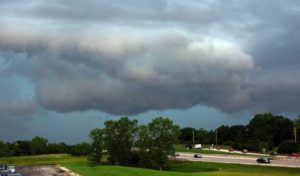Before A Tornado:
- To begin preparing, you should build an emergency kit and make a family communications plan.
- Listen to NOAA Weather Radio or to commercial radio or television newscasts for the latest information. In any emergency, always listen to the instructions given by local emergency management officials.
- Be alert to changing weather conditions. Look for approaching storms.
- Look for the following danger signs:
- Dark, often greenish sky
- Large hail
- A large, dark, low-lying cloud (particularly if rotating)
- Loud roar, similar to a freight train.
- If you see approaching storms or any of the danger signs, be prepared to take shelter immediately.
Tornado Facts
Quick facts you should know about tornadoes:
- They may strike quickly, with little or no warning.
- They may appear nearly transparent until dust and debris are picked up or a cloud forms in the funnel.
- The average tornado moves Southwest to Northeast, but tornadoes have been known to move in any direction.
- The average forward speed of a tornado is 30 mph, but may vary from stationary to 70 mph.
- Tornadoes can accompany tropical storms and hurricanes as they move onto land.
- Waterspouts are tornadoes that form over water.
- Tornadoes are most frequently reported east of the Rocky Mountains during spring and summer months.
- Peak tornado season in the southern states is March through May; in the northern states, it is late spring through early summer.
- Tornadoes are most likely to occur between 3 pm and 9 pm, but can occur at any time.
Know the Terms
Familiarize yourself with these terms to help identify a tornado hazard:
Tornado Watch – Tornadoes are possible. Remain alert for approaching storms. Watch the sky and stay tuned to NOAA Weather Radio, commercial radio or television for information.
Tornado Warning – A tornado has been sighted or indicated by weather radar. Take shelter immediately.

